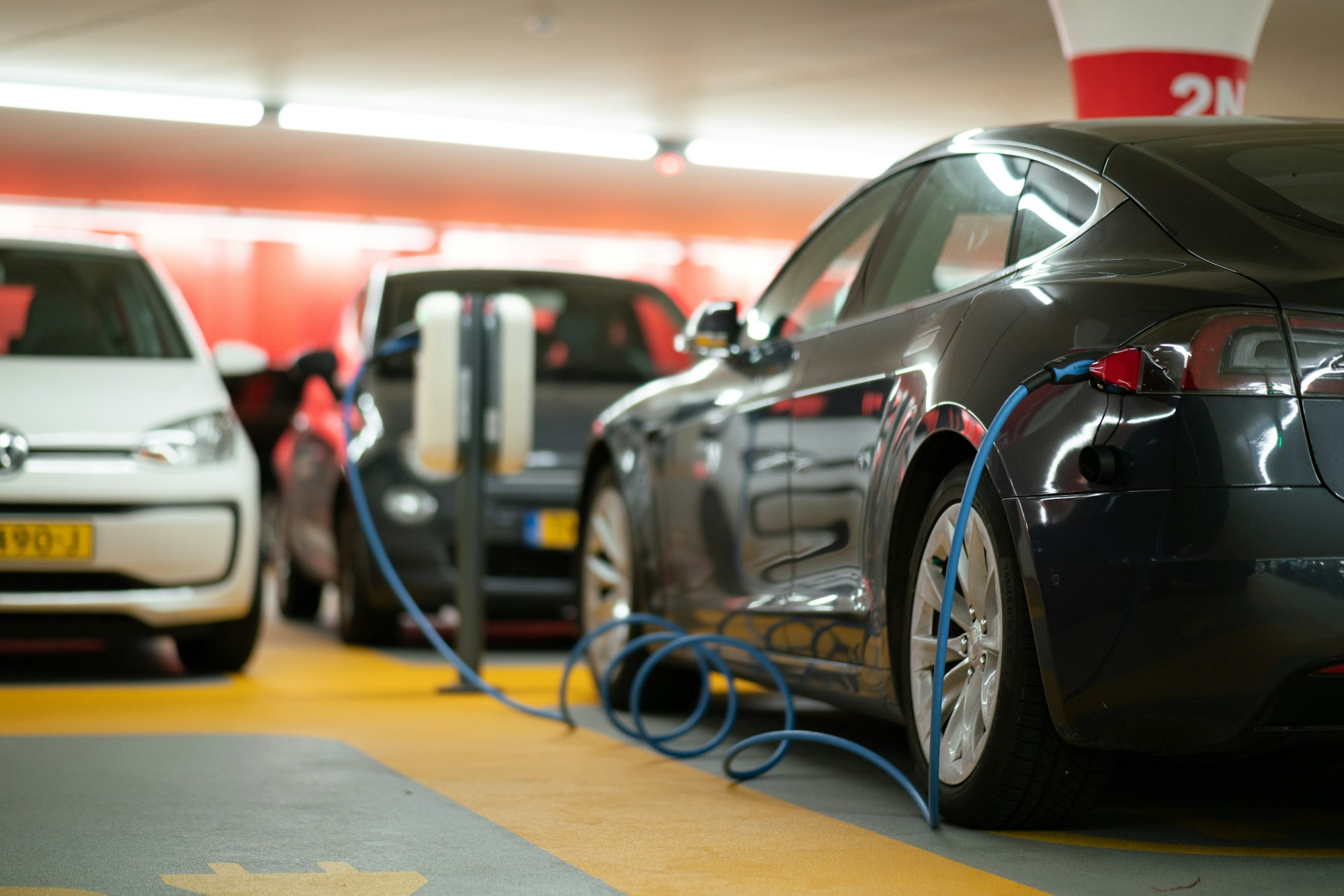Electric vehicles use electrical power instead of gas or diesel to rotate their wheels.
We will focus on consumer light-duty cars and trucks, but much of this applies to semi-trucks, motorcycles, and even to boats and planes. We won’t cover all of this complex space, but you should come out with a general overview.

There are 5 important groupings of vehicle:
Internal Combustion Engine Vehicle (ICEV)
The car roughly 99% of the world drives today, which burns gas or diesel to generate power.
Not Electric.
Hybrid Electric Vehicle (HEV)
Simply an ICEV that also has an electric motor and batteries. The vehicle generates electricity to charge batteries, and the electric motor can share the task of driving. It cannot be plugged in, and cannot be driven without gas or diesel in the tank. The electric motor shares the task of driving and only sometimes drives without the ICE running (usually only at low speeds). It’s best to think of these as traditional gas or diesel vehicles with better range, efficiency or performance delivered by an electric motor and batteries. It does not have meaningful long-term impact.
Only Partially Electric.
Plugin Hybrid Electric Vehicle (PHEV)
Similar to a hybrid, except the batteries can be plugged in to charge. If there is not enough energy in the batteries it switches over to combustion. As long as this vehicle is used within its electric range, you can drive it without burning gas or diesel, so it has real potential for impact.
Only Partially Electric.
Fuel Cell Electric Vehicle (FCEV)
Has an electric motor only (no combustion engine) and is powered by hydrogen fuel cells. Hydrogen fuel cells output no emissions while generating electricity, and are refilled with liquid hydrogen as a fueling station. Hydrogen can be produced with zero reliance on fossil fuels.
Fully Electric.
Battery Electric Vehicle (BEV)
Has an electric motor (no combustion engine) and is powered by batteries. This is the end goal of any full transition to electric, as it can result in transport with zero reliance on fossil fuels.
Fully electric.

We will focus most discussion on battery electric vehicles. The real world is more complicated and there is also value in pursuing partially electric vehicles, at least in the short term.
By-The-Numbers
Electric Vehicles are Coming. About 1% of global car stock (7.2M cars) went electric from 2010–2019. In 2019, 2.1M electric cars were sold, or ~2.6% of global car sales. BEVs alone account for 4.8M vehicles now. The growth trend appears to be accelerating, increasing to 4.2% of sales in 2020. Numbers in this paragraph refer to passenger light-duty BEVs and PHEVs.

Ok, now that we got the basics out of the way, move on to Why Electric Vehicles?
Header image credit: Michael Fousert
